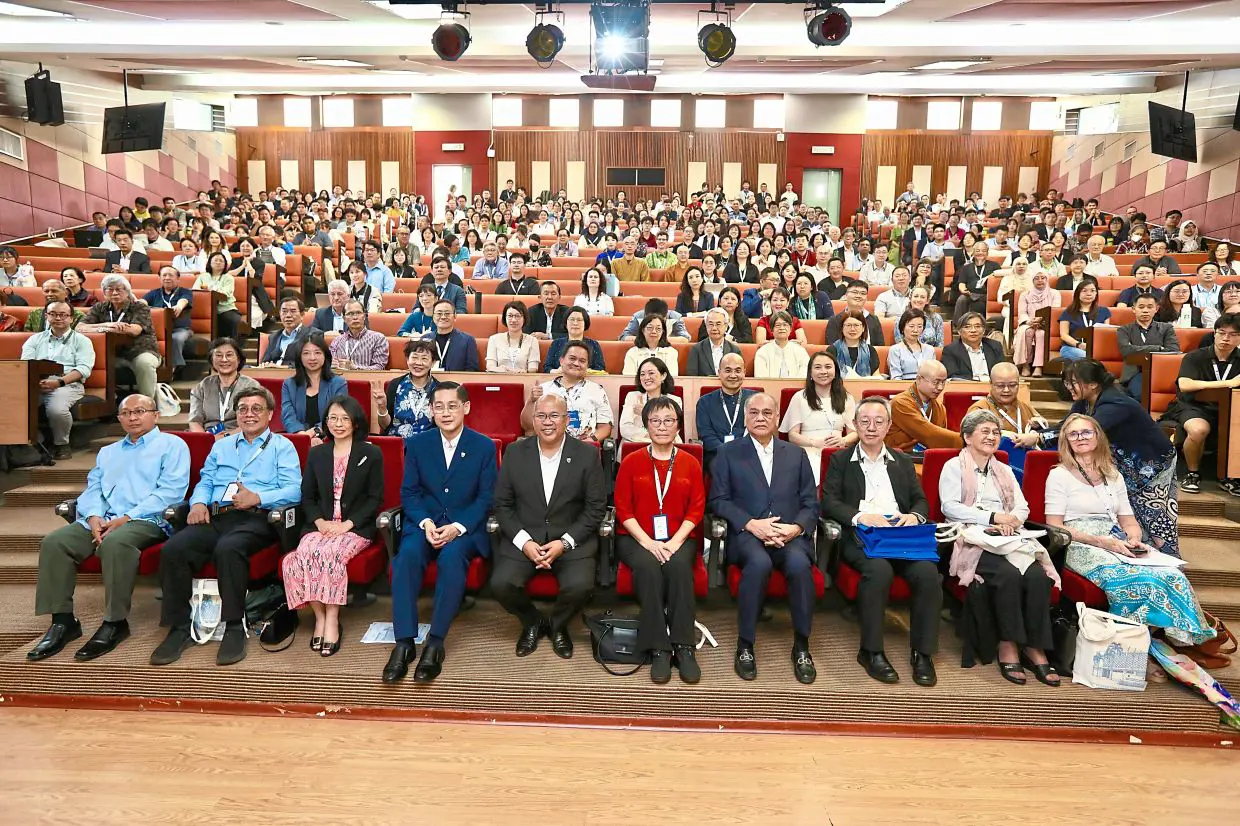 Looking back: Prof Wong (right) showing a decorative timeline to (from left) Prof Datuk Seri Dr Noor Azuan Abu KUALA LUMPUR: The rise of China and the emergence of new Chinese communities across the globe have made the study of their migration more relevant than ever, says Universiti Malaya’s (UM) Arts and Social Sciences Faculty dean Prof Datuk Dr Danny Wong Tze Ken.
Looking back: Prof Wong (right) showing a decorative timeline to (from left) Prof Datuk Seri Dr Noor Azuan Abu KUALA LUMPUR: The rise of China and the emergence of new Chinese communities across the globe have made the study of their migration more relevant than ever, says Universiti Malaya’s (UM) Arts and Social Sciences Faculty dean Prof Datuk Dr Danny Wong Tze Ken.He said research on Chinese overseas communities initially focused on those who migrated during the 19th and 20th centuries – examining their origins, cultural identities and how they adapted to local societies – but new migration waves have since transformed these studies.
“With the rise of China, we are now seeing the movement of a new group of migrants, who have formed new communities around the world.
“These new groups have shaped local societies through new businesses, organisations and cultural exchanges that differ from earlier generations,” he said at the opening ceremony of the 12th International Conference of the International Society for the Study of Chinese Overseas (ISSCO), which brought together 380 scholars from 27 countries to share insights on Chinese migration, identity and transnational networks.
Prof Wong said the theme “Chinese Overseas in a Changing World: Global Networks, Local Realities”, held at UM yesterday, reflects the shifting dynamics of Chinese migration in today’s interconnected world.
ISSCO president Prof Li Minghuan said the conference’s theme reflected the growing uncertainties of the modern world, shaped by China’s expanding global influence and its complex relationships with other major powers.
“China’s rising stature and its relations with the United States, European Union and the Global South shape the direction of the world and influence the development of overseas Chinese communities.
“Overseas Chinese today are influenced not only by global trends but also by the political, economic, social and cultural contexts of the countries where they live,” she said.
Prof Li added that ISSCO, now in its 33rd year, had grown into a dedicated academic community that fosters intellectual exchange and lasting friendships across borders.




